Woodard & Curran Inc.9780750679633, 0750679638
Utilizing the most up-to-date examples from recent work at one of the leading environmental and science consulting firms, this book also illustrates approaches to solve various environmental quality problems and the step-by-step design of facilities.
* Practical applications to assist with the selection of appropriate treatment technology for target pollutants.
* Includes case studies based on current work by experts in waste treatment, disposal, management, environmental law and data management.
* Provides glossary and table of acronyms for easy reference.
Table of contents :
Front Matter……Page 1
Preface to First Edition……Page 4
Preface to Second Edition……Page 5
Acknowledgments……Page 6
Table of Contents……Page 0
Table of Contents……Page 7
1. Evaluating and Selecting Industrial Waste Treatment Systems……Page 25
1.1 Treatment Evaluation Process: Industrial Wastewater……Page 26
1.1.2 Step 2: Wastes Minimization and Wastes Characterization Study……Page 27
1.1.3 Step 3: Determine Treatment Objectives……Page 28
1.1.6 Step 6: Pilot-scale Investigations……Page 29
1.1.8 Step 8: Conduct Economic Comparisons……Page 33
1.1.8.2 O&M Costs……Page 34
1.1.9 Step 9: Final Design……Page 40
1.1.10 Step 10: Solicitation of Competitive Bids for Construction……Page 41
1.2 Treatment Evaluation Process: Air Emissions……Page 42
1.2.1 Analysis of Manufacturing Process……Page 43
1.2.2 Wastes Minimization and Characterization Study……Page 48
1.2.6 Pilot-scale Investigations……Page 49
1.2.7 Preliminary Design……Page 50
1.3 Treatment Evaluation Process: Solid Wastes……Page 51
1.4 Bibliography……Page 52
2. Fundamentals……Page 53
2.1 Electron Configurations and Energy Levels……Page 54
2.2 Electrical and Thermodynamic Stability……Page 56
2.3 Chemical Structure and Polarity of Water……Page 57
2.5 Solutions and Mixtures……Page 62
2.5.1 Second Law of Thermodynamics……Page 63
2.5.2 Solutions……Page 64
2.5.3.1 Forming an Emulsion with an Emulsifying Agent……Page 65
2.5.3.2 Forming an Emulsion by Vigorous Mixing……Page 67
2.5.4 Colloidal Suspensions……Page 68
2.6 Summary……Page 69
2.7.1 Poultry Processing Wastewater……Page 70
2.7.4 Wastewater from a Parts Cleaning Process……Page 72
2.8 Bibliography……Page 73
3.2 History of Permitting and Reporting Requirements……Page 74
3.3 Water Pollution Control Laws……Page 76
3.4 Groundwater Pollution Control Laws……Page 78
3.5.1 General……Page 81
3.5.2 Air Pollution Control Law, as of the Year 2005……Page 83
3.5.2.2 Title III, Air Toxics Control……Page 84
3.5.2.4 Title V, Permits and Reporting……Page 85
3.6 Bibliography……Page 87
4.1.1 National Pollution Prevention Policy……Page 89
4.1.1.1 Considerations of Cost……Page 90
4.1.1.4 Benefits of Pollution Prevention……Page 91
4.2.1 Secure Unequivocal Support from Management……Page 92
4.2.2 Clearly Establish Objectives and Targets……Page 93
4.2.4 Accurate Cost Accounting System……Page 94
4.2.6 Implement Environmental Policy……Page 95
4.2.8 Pollution Prevention Assessment……Page 96
4.3.1.1 Prevention……Page 98
4.3.1.2 Reduce……Page 99
4.3.1.3 Reuse……Page 100
4.3.1.4 Recycle……Page 102
4.3.1.6 Dispose……Page 103
4.4 Bibliography……Page 104
5.1.1 Choice of Sampling Location……Page 105
5.1.3 Sample Preservation……Page 107
5.2 Waste Audit……Page 108
5.2.2 Identify Hazardous Substances Leaving the Facility……Page 109
5.2.5 Analyze the Feasibility of Toxic Load Reduction……Page 110
5.2.6 Evaluate the Economics of Pollution Prevention……Page 111
5.3 Environmental Audit……Page 112
5.4.1.1 BOD……Page 119
5.4.1.2 COD……Page 123
5.4.1.4 pH, Acidity, and Alkalinity……Page 124
5.4.1.7 Color……Page 125
5.4.1.8 Turbidity……Page 127
5.4.1.10 Compounds Containing Nitrogen……Page 128
5.4.1.14 Total Volatile Suspended Solids (TVSS)……Page 129
5.4.1.15 Oil and Grease……Page 131
5.4.2.3 Hardness……Page 132
5.4.2.4 Iron and Manganese……Page 133
5.5.1 Stack Sampling……Page 134
5.5.2.5 Condensation (Freeze-out) in a Trap……Page 135
5.5.2.11 Impaction……Page 136
5.5.4 Ambient Air Sampling……Page 138
5.5.5 Air Pollutants……Page 140
5.6.1 Hazardous Wastes……Page 142
5.6.1.3 Reactive……Page 143
5.6.1.4 Toxic……Page 144
5.7 Bibliography……Page 147
6.2 Federal Stormwater Program……Page 150
6.3 State Stormwater Permitting Programs……Page 151
6.3.1.2 Individual Permit……Page 152
6.3.3 Stormwater Pollution Prevention Plan (SWPPP)……Page 153
6.5 Stormwater Management Concepts……Page 154
6.6.3 Precipitation……Page 155
6.6.6 Collection System Design……Page 156
6.6.9 Technologies to Achieve Treatment Goals……Page 157
6.7 Stormwater as a Source of Process Water Makeup……Page 158
6.7.2 Biological Oxygen Demand (BOD)……Page 159
6.7.4.2 Preliminary Engineering Studies……Page 160
6.7.4.3 Initial Design of RMF……Page 162
6.7.4.5 Water Balance……Page 163
6.7.4.8 Treatment and Recycle Storage……Page 166
6.8 Bibliography……Page 170
7.1 General……Page 171
7.2 Principle and Nonprinciple Treatment Mechanisms……Page 172
7.3 Waste Equalization……Page 175
7.3.1 Flow Equalization……Page 176
7.3.2 Constituent Equalization……Page 178
7.4 pH Control……Page 179
7.5.1 Reaction to Produce an Insoluble Solid……Page 183
7.5.1.2 Disadvantages of Treatment by Production of an Insoluble Compound……Page 188
7.5.2 Reactions to Produce an Insoluble Gas……Page 190
7.5.3 Reduction of Surface Charge to Produce Coagulation of a Colloidal Suspension……Page 191
7.5.3.1 Lyophobic Sols……Page 192
7.5.3.2 Lyophilic Sols……Page 193
7.5.3.3 Electrokinetics of Lyophobic Sols……Page 194
7.5.3.4 Electrokinetics of Lyophilic Sols……Page 195
7.5.3.5 Coagulation of Colloidal Waste Systems……Page 196
7.5.4 Reaction to Produce a Biologically Degradable Substance from a Nonbiodegradable Substance……Page 198
7.5.5.1 Organic Chelating Agents……Page 199
7.5.6 Coprecipitation……Page 200
7.5.7.1 Alkaline Chlorination of Cyanide……Page 201
7.5.7.3 Oxidative Destruction of Organics by Free Radicals……Page 203
7.5.7.6 Solvent Extraction……Page 207
7.6.1 Organic Matter……Page 208
7.6.7 H2O……Page 209
7.7 Development of Design Equations for Biological Treatment of Industrial Wastes……Page 211
7.7.1 Development of Biological Treatment Kinetics in the Laboratory……Page 213
7.7.2 The Role of Oxygen in Wastewater Treatment……Page 215
7.7.3 Biological Treatment Technologies……Page 217
7.8.1 Suspended Growth Systems: Activated Sludge……Page 220
7.8.1.1 Selectors……Page 224
7.8.1.2 Variations of the Activated Sludge Process……Page 226
7.8.1.3 Design and Operational Characteristics of Activated Sludge Systems……Page 241
7.8.1.4 Aeration Systems for Activated Sludge……Page 242
7.8.1.5 Basics of Oxygen Transfer……Page 250
7.8.1.6 Aerated Lagoons……Page 256
7.8.1.8 Oxidation Ponds……Page 257
7.8.1.9 Design of Lagoon Systems……Page 258
7.8.1.10 Attached Growth Systems……Page 260
7.8.2 Treatment of Industrial Wastewaters Using Anaerobic Technologies……Page 272
7.8.2.2 Mechanisms of Anaerobic Metabolism……Page 274
7.8.2.3 Variations of Anaerobic Treatment Systems……Page 278
7.9.1 Separation Using Physical Barriers……Page 285
7.9.1.1 Racks and Screens……Page 286
7.9.1.2 Plate and Frame Filters……Page 291
7.9.1.3 Membrane Separation……Page 292
7.9.2.1 Deep Bed Granular Filters……Page 296
7.9.3.1 Precoat……Page 302
7.9.3.2 Body Feed……Page 303
7.9.3.4 Packaged Water Treatment Systems……Page 305
7.9.5 Plain Sedimentation……Page 307
7.9.6 Discrete Settling……Page 308
7.9.8 Sludge Thickening……Page 310
7.9.8.1 Design Procedure……Page 312
7.9.8.2 Design Calculations……Page 319
7.9.9 Plate, Lamella, and Tube Settlers……Page 327
7.9.10 Centrifugation……Page 329
7.9.11.1 Gravity Flotation……Page 332
7.9.11.2 Dissolved Air Flotation……Page 334
7.9.12.1 The Adsorbent……Page 341
7.9.12.2 Adsorption Equilibria……Page 342
7.9.13 Ion Exchange……Page 348
7.9.13.1 Mechanisms of Ion Exchange……Page 350
7.9.13.2 Kinetics of Ion Exchange……Page 351
7.9.13.4 Application of Ion Exchange to Industrial Wastewater Treatment……Page 352
7.9.14 Stripping……Page 355
7.9.15 Scrubbing……Page 356
7.9.17.1 Land Application……Page 358
7.9.17.4 Wetlands Treatment……Page 360
7.10 Bibliography……Page 361
8.2 Air Pollution Control Laws……Page 365
8.3.1 Waste Minimization and Reduction at the Source……Page 366
8.3.2.3 Stabilization……Page 367
8.3.3.2 Sample Collection……Page 368
8.3.4.1 Treatment Systems for Control of Particulates……Page 369
8.4 Treatment Objectives……Page 375
8.4.1 Treatment Systems for Control of Gaseous Pollutants……Page 376
8.4.1.1 Adsorption……Page 377
8.4.1.2 Absorption……Page 380
8.4.1.4 Incineration……Page 382
8.4.1.5 Biofiltration……Page 384
8.5 Bibliography……Page 387
9. Solid Waste Treatment and Disposal……Page 392
9.1 Background……Page 393
9.2.1 Hazardous Wastes……Page 394
9.2.3 Nonhazardous Solid Waste……Page 396
9.3.2 Volume Rate of Waste Generation……Page 398
9.3.4 Suitability of the Waste for Incineration……Page 399
9.3.6 Solidification and Stabilization of Industrial Solid Wastes……Page 400
9.3.8.1 Organic Binding Agents……Page 401
9.3.8.2 Inorganic Binding Agents……Page 403
9.3.8.3 Mechanisms Involved in S/S Treatment Procedures……Page 405
9.4.1 The Conventional Landfill……Page 406
9.4.2 Landfill Liner System……Page 407
9.5.1 Daily and Intermediate Cover……Page 409
9.5.2 Final Cover and/or Cap……Page 410
9.5.3 Gas Venting……Page 411
9.5.5 Discharges from Landfills……Page 413
9.5.6 Alternative Landfills……Page 415
9.6 Solid Waste Incineration……Page 416
9.6.1 Fluidized Bed Technology……Page 417
9.6.2 Rotary Kiln Technology……Page 419
9.6.2.1 Advantages……Page 420
9.6.2.2 Disadvantages……Page 422
9.6.3 Hearth Incinerator Technologies……Page 423
9.6.4 Modular Systems……Page 424
9.6.5 Starved Air Technologies……Page 425
9.6.5.3 Design Considerations……Page 426
9.7 The Process of Composting Industrial Wastes……Page 428
9.7.1 Windrow Composting Technology……Page 431
9.7.3 Mechanical Composting Technology……Page 432
9.7.4.1 Nutrients……Page 433
9.7.4.2 Odors……Page 434
9.8 Bibliography……Page 435
10.1 General……Page 439
10.1.2 Degreasing……Page 440
10.1.3 Rinsing……Page 442
10.2 Electroplating of Tin……Page 443
10.2.1.1 Preplating……Page 444
10.2.1.3 Rinse……Page 446
10.2.2.2 Airborne Wastes……Page 448
10.2.2.3 Waterborne Wastes……Page 449
10.2.3 Waste Minimization……Page 450
10.2.4 Wastewater Treatment……Page 451
10.3 The Copper Forming Industry……Page 452
10.3.1.5 Annealing……Page 453
10.3.1.12 Pickling Baths, Rinses, and Fume Scrubbers……Page 454
10.3.2.4 Oil and Grease……Page 455
10.4 Prepared Frozen Foods……Page 456
10.4.4 Prepared Dinners……Page 457
10.4.6 Italian Specialties……Page 459
10.4.7 Chinese Foods and Mexican Foods……Page 460
10.4.8 Breaded Frozen Products……Page 461
10.4.9 Wastes Minimization……Page 462
10.4.10.2 Waterborne Wastes……Page 463
10.5 Wastepaper De-inking……Page 464
10.5.1 The De-inking Process – Wastes Generation……Page 465
10.5.1.9 Bleaching……Page 466
10.5.4 Wastes Minimization……Page 467
10.5.5.3 Activated Sludge……Page 470
10.5.5.4 Anaerobic Contact Filter……Page 471
10.6.1 Aluminum Die Casting……Page 472
10.6.4.2 Scrubbers……Page 474
10.6.5.1 Solids……Page 477
10.7 Anodizing and Alodizing……Page 478
10.7.2 Alodizing……Page 479
10.7.4 Wastes Minimization……Page 480
10.8.1 The Coking Process……Page 482
10.8.2.3 Waterborne Wastes……Page 483
10.8.4 Wastewater Treatment……Page 485
10.9 The Wine Making Industry……Page 486
10.9.1 The Wine Production Process……Page 487
10.9.4 Treatment of Winery Wastes……Page 488
10.10 The Synthetic Rubber Industry……Page 490
10.10.1.1 Emulsion Crumb Production……Page 491
10.10.1.2 Solution Crumb Production……Page 493
10.10.2.3 Waterborne Wastes……Page 495
10.10.3 Wastes Minimization……Page 497
10.10.4 Wastewater Treatment……Page 498
10.11.1 Production of Bottled Soft Drinks……Page 499
10.11.3.2 Wastes Minimization……Page 502
10.11.4 Wastewater Treatment……Page 503
10.12 Production and Processing of Beef, Pork, and Other Sources of Red Meat……Page 504
10.12.1 The Production and Processing of Beef……Page 505
10.12.4 Wastes Generation……Page 507
10.12.4.3 Waterborne Wastes……Page 508
10.12.6.3 Waterborne Wastes……Page 509
10.13.1 The Rendering Process……Page 511
10.13.2.1 Solid Wastes……Page 513
10.13.3 Wastes Minimization……Page 514
10.13.4.2 Airborne Wastes……Page 515
10.13.4.3 Waterborne Wastes……Page 516
10.14.1 Lead Battery Manufacture……Page 518
10.14.1.6 Assembly……Page 519
10.14.2 Wastes Generation……Page 521
10.14.2.3 Waterborne Wastes……Page 522
10.14.4 Wastewater Treatment……Page 523
10.15 Bibliography……Page 524
Glossary & Acronyms……Page 529
Acronyms……Page 530
A……Page 533
B……Page 538
C……Page 540
D……Page 545
E……Page 547
F……Page 549
G……Page 551
H……Page 552
I……Page 553
L……Page 557
M……Page 559
N……Page 560
O……Page 561
P……Page 562
R……Page 567
S……Page 569
T……Page 576
U……Page 577
W……Page 578
Z……Page 581
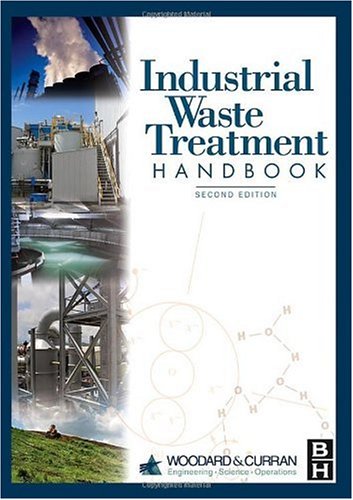

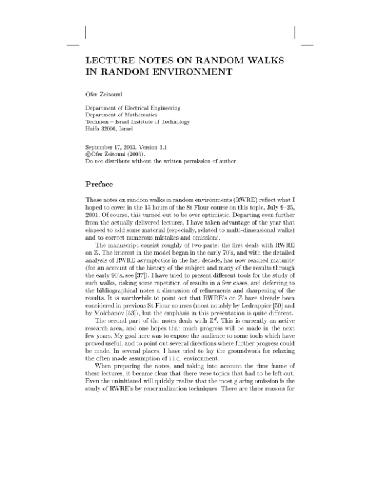
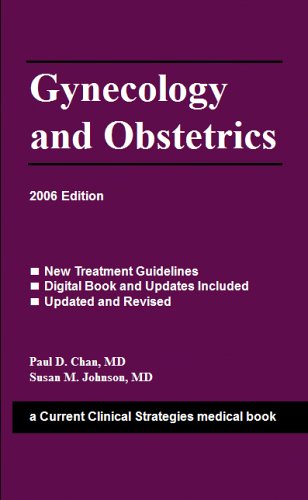
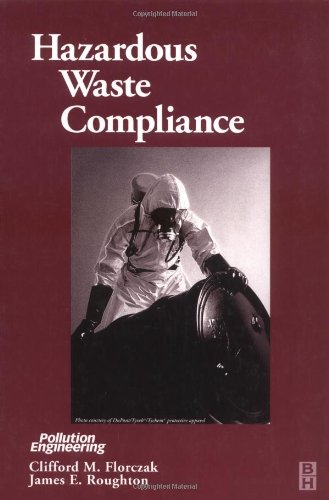
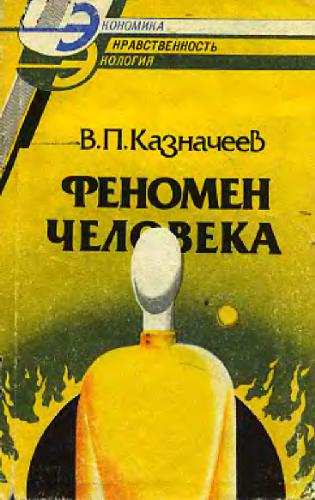

Reviews
There are no reviews yet.